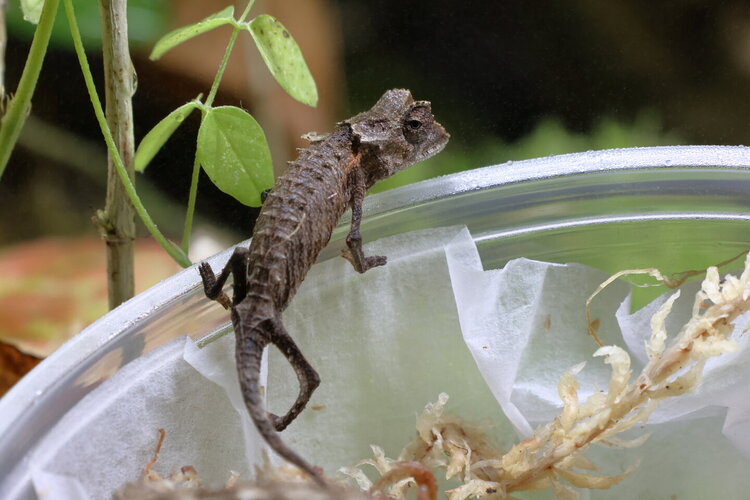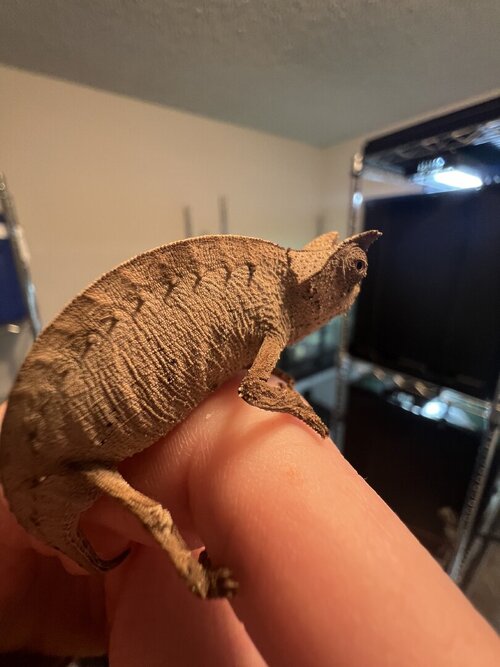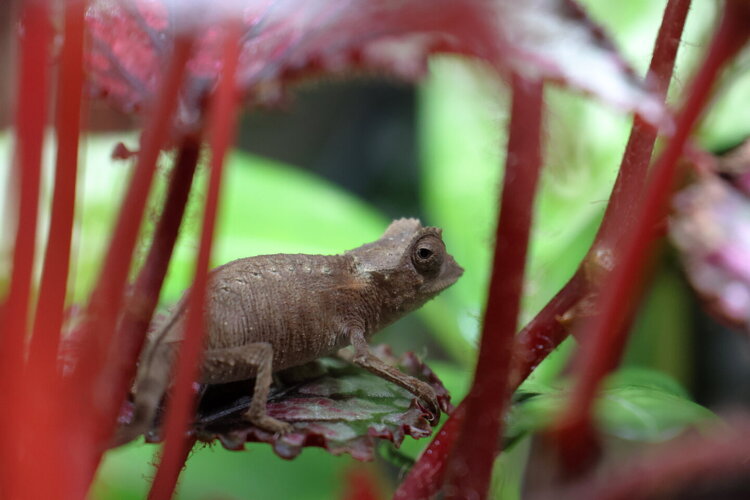yoteango
Established Member
A few months ago I posted a list of plants that can be found in Madagascar. Mostly ignored that list and and turned it into a generic terrarium with the hope that I'd be able to put some Brookesia in it eventually. It's been growing for a while now. A front opening 40 gallon.
On Saturday I got a notification that LLLReptile had a pair of Brookesia in stock. Despite their reputation, I jumped at the chance and a few minutes later had ordered it (before any of you fine folk could), and today the precious little things arrived, smaller than I realized. I'm hoping they are in mostly good health, but I'm not sure yet if they are. One is active and eating fruit flies and seems fine, the larger one seemed dead at first but climbed into a corner and hasn't been opening its eyes too much. I'm hoping it's still waking up and not too hungry or stressed from the journey, but it hasn't been active otherwise in the last couple hours. Any advice here would be greatly appreciated.
They were ordered as B. superciliaris, but were labeled as B. stumpffi. All I'm really hoping is that they're the same species and one is male and the other female. I did not weigh them, but one is much smaller than the other.
Could you please help me with identifying species, sex, and maybe even age? Other tips and tricks would be good, I've been having to relearn some stuff.
In exchange please accept these pictures.
Thank you
On Saturday I got a notification that LLLReptile had a pair of Brookesia in stock. Despite their reputation, I jumped at the chance and a few minutes later had ordered it (before any of you fine folk could), and today the precious little things arrived, smaller than I realized. I'm hoping they are in mostly good health, but I'm not sure yet if they are. One is active and eating fruit flies and seems fine, the larger one seemed dead at first but climbed into a corner and hasn't been opening its eyes too much. I'm hoping it's still waking up and not too hungry or stressed from the journey, but it hasn't been active otherwise in the last couple hours. Any advice here would be greatly appreciated.
They were ordered as B. superciliaris, but were labeled as B. stumpffi. All I'm really hoping is that they're the same species and one is male and the other female. I did not weigh them, but one is much smaller than the other.
Could you please help me with identifying species, sex, and maybe even age? Other tips and tricks would be good, I've been having to relearn some stuff.
In exchange please accept these pictures.
Thank you
Attachments
-
 1709676418570.png1.6 MB · Views: 21
1709676418570.png1.6 MB · Views: 21 -
 1709676467306.png1.6 MB · Views: 19
1709676467306.png1.6 MB · Views: 19 -
 1709678079073.png1.8 MB · Views: 21
1709678079073.png1.8 MB · Views: 21 -
 476A6131.JPG199.2 KB · Views: 18
476A6131.JPG199.2 KB · Views: 18 -
 476A6234.JPG206.5 KB · Views: 20
476A6234.JPG206.5 KB · Views: 20 -
 476A6256.JPG175.4 KB · Views: 18
476A6256.JPG175.4 KB · Views: 18 -
 476A6174.JPG159.5 KB · Views: 21
476A6174.JPG159.5 KB · Views: 21 -
 476A6195.JPG291.1 KB · Views: 21
476A6195.JPG291.1 KB · Views: 21 -
 476A6213.JPG354.9 KB · Views: 19
476A6213.JPG354.9 KB · Views: 19

















